In the words of B. Max Mehl, the Kellogg & Co. fifty dollar gold pieces are "the most beautiful of all Pioneer gold coins and one of the rarest." While Heritage has handled Kellogg fifties on several occasions in the past, we take particular pleasure in offering this specimen, which seems to match none of the previously known examples of this extraordinary issue. A "new" Kellogg fifty is a numismatic landmark and an unparalleled opportunity for the Territorial gold collector.  For more than a century, numismatists have puzzled over the purpose of the Kellogg fifties and exactly how many were struck. All known specimens were minted in proof format, suggesting they may have served as presentation pieces for bankers and politicians: They were struck when the firm was considering a large business strike mintage to compete with the fifty dollar pieces of their competitors, Wass, Molitor and Company. The "regular-issue" coins never materialized, but the proof production has delighted and puzzled collectors since the coins appeared. For more than a century, numismatists have puzzled over the purpose of the Kellogg fifties and exactly how many were struck. All known specimens were minted in proof format, suggesting they may have served as presentation pieces for bankers and politicians: They were struck when the firm was considering a large business strike mintage to compete with the fifty dollar pieces of their competitors, Wass, Molitor and Company. The "regular-issue" coins never materialized, but the proof production has delighted and puzzled collectors since the coins appeared.
One disputed question about the Kellogg proof fifties has been the number struck. The proprietors of Kellogg & Co., John Glover Kellogg and Augustus Humbert, were partners in 1855. Both of them retained several examples of the Kellogg fifties long after they dissolved their partnership in 1860. Kellogg's heirs, including his son Karl, remained in possession of three coins many years after Kellogg's death in 1886. Humbert, who died in 1873, left his collection to his brother, Pierre. When Pierre died in 1901, his heirs sold the collection to Captain Andrew C. Zabriskie. As Henry Chapman relates in the introduction to the Zabriskie Collection (Henry Chapman, 6/1909): "Capt. Zabriskie some years ago had the good fortune to purchase from his executors the collection of coins left by Mr. Humbert, the California Assayer, and from which collection he derived many of the most remarkable Pioneer Gold Coins, which , added to his collection that had been forming for many years, makes his Pioneer Gold the best ever offered at public sale."
Later in the sale, Chapman described the Kellogg fifty in lot 341, which realized $1,250, a huge price at the time. To quote his description in part: "Sharp, beautiful specimen. The finest known, as Capt. Zabriskie had his choice of the six which Mr. Humbert had preserved. So far as I am aware, it is possible about 10 are known, in fact, this is the number it is said was coined."
Chapman thus reveals the startling fact that Humbert saved at least six specimens of this issue until his death. We can only wonder what Humbert's purpose was, since $300 was a large sum in 1855, too large to tie up in souvenirs. Whatever his reasons, he deserves the thanks of all Pioneer gold collectors for preserving so many of these wonderful coins. In his catalog of Humbert's collection, which he sold in 1902, Chapman mentioned one specimen in the collection of J.W. Scott, which would be the 10th coin in his census, after the three kept by Kellogg's family and the six in Humbert's estate. The trouble with Chapman's roster is this: More than 10 specimens have always been known to numismatists since the coins surfaced. The census of known examples has gone up and down over the years, but most catalogers agree at least 13 pieces were struck, even if fewer examples seemed to be extant at a particular time. With the appearance of the present coin, we have a pictorial record of what seem to be 14 different coins. In 1905, prominent collector DeWitt Smith compiled a list of 13 coins he was familiar with, and the owner of each piece. Edgar Adams published the list in Private Gold Coinage of California in 1912, making one correction. The number of known specimens remained the same, but an example DeWitt Smith erroneously believed to be in the Mint Cabinet was removed from the roster, and a specimen in the H.O. Granberg Collection he was unaware of was added. Apparently, Chapman was unaware of the list in 1909, when he reported only 10 specimens were struck. The J.W. Scott coin was not on Adams' list, and no such coin appeared in the catalog of Scott's collection when he offered it in 1882. Still, the fact that we have 14 specimens extant today lends credence to Chapman's statement regarding the coin's existence. Zabriskie marketed the five duplicate specimens from Humbert's collection, along with many other coins, through the Chapman Brothers. They placed one of the Kellogg fifties in lot 716 of the William R. Weeks and Augustus Humbert Collections (S.H. and H. Chapman, 5/1902), which realized $575 to Virgil Brand. They sold one example each to George Earle and John Story Jenks by private treaty. It is very likely that John A. Beck acquired his Kellogg fifty in the same fashion. The details of what happened to the final coin in Humbert's hoard are unknown, but it was undoubtedly sold to one of the early collectors on DeWitt Smith's list. When news of the great prices realized by the coins featured at auction spread, the examples held by Kellogg's descendants and the other specimens began to appear on the market. We have included as much of the history of these fabulous coins as can be determined in the roster below. Greg Reynolds in his lasted Coin Rarities Column stated "I am certain that this is not one of the two that Stack's auctioned in March 2005. I am almost certain that it is not an 'upgrade' of the PCGS certified Proof-53 Kellogg fifty that sold in Superior's (Goldbergs') session of Auction '90. Except the probably never certified Eliasberg coin, all the other privately owned Kellogg $50 gold pieces on Borckardt's 2007 list have been PCGS or NGC graded 62 or higher. Therefore, it appears that this one is a newly emergent Kellogg fifty or a rediscovery of one that had been forgotten about or had been erroneously incorporated into the pedigree chains of one of the others. Either way, it is exciting. I believe that the Kellogg fifties are the only classic, Proof $50 gold coins that are available to collectors." The present coin is sharply struck, with fine detail on Liberty's hair and all star centers fully brought up. A few minor handling marks are evident on both sides, almost inevitable with such a large gold coin. The brightly reflective surfaces are a pleasing orange-gold, with green highlights. The majesty of this numismatic icon cannot be conveyed by words or pictures alone. It only becomes real when you feel the solid weight of this enormous gold coin in your hand. The discovery of a new Kellogg fifty is big news for the numismatic community. The last time a previously unknown specimen of a coin of this magnitude appeared was in 2005, when the C.L. Lee specimen of the 1854-S quarter eagle came to light. Of course, there is also a precedent in the roster of Kellogg fifties, when coin number 5 surfaced in the Buddy Ebsen Collection in 1987. We expect the excitement of those previous landmark events to be equaled when this lot is offered. The following roster was compiled from many sources, expanding on previous efforts by Walter Breen and DeWitt Smith, with extensive contributions by Heritage Senior Cataloger Mark Borckardt, numismatic researchers P. Scott Rubin and Karl Moulton, and Pioneer gold specialist Don Kagin. It is believed that just 14 examples of this famous rarity are known, but some earlier appearances are not definitely accounted for today and may yet turn up as additional coins. The numbers assigned to each specimen rank them according to grade, with the exception of the present coin, listed as number 14. The associated number from Walter Breen's roster has been included where applicable. At one time or another, most of the known examples have been described as the finest known. 1. PR64 PCGS. Breen #11. British private collection; Greater New York Convention (Stack's, 5/1984), lot 784; Robert Hughes; Rarities Sale (Bowers and Merena, 8/1995), lot 498; 2007 FUN Auction (Heritage, 1/2007), lot 3893. In the 1984 catalog, Stack's noted: "From information conveyed to us, this coin has recently come from England along with a few less important Territorial and Federal gold coins." 2. PR64 PCGS. Breen #1. Augustus Humbert; Humbert's heirs; Capt. Andrew C. Zabriskie; Zabriskie Collection (Henry Chapman, 6/1909), lot 341; Col. James W. Ellsworth; John Work Garrett; Johns Hopkins University; Garrett Collection (Bowers and Ruddy, 3/1980), lot 910; Kagin's; Paul Padget; Donald Kagin and Stuart Levine; private collection. In the Garrett catalog, it was noted: "It is believed to be the finest known example of its kind." However, that catalog was written several years before the example mentioned above became known to the numismatic community. Note: Walter Breen recorded the Garrett piece as later appearing in Auction '85. However, the coin in that auction was the unique 1854 Kellogg $20 proof from the Garrett Collection. 3. PR63 PCGS. Not in Breen. Smith & Son (3/1941); Frank Heim (6/2000); Don Kagin; Q. David Bowers; Don Kagin; Superior (1/2005), lot 953; Western collector; ANA Signature Auction (Heritage, 8/2007), lot 2119; FUN Signature Auction (Heritage, 1/2008), lot 3448. 4. PR63 PCGS. Breen #2. Kellogg family; possibly sold privately by Thomas Elder around 1916; New York collector, possibly F.C.C. Boyd; "J.F. Bell" in 1945; Memorable Collection (Numismatic Gallery, 3/1948), lot 967; Don Keefer; F.K. Saab; Gibson Sale (Stack's, 11/1974), lot 189; Auction '79 (Stack's, 7/1979), lot 996; Jerome S. Coles Collection (Stack's, 10/1983), lot 239; 68th Anniversary Sale (Stack's, 10/2003), lot 2292; 72nd Anniversary Sale (Stack's, 10/2007), lot 4017; FUN Signature Auction (Heritage, 1/2009), lot 4228. 5. Choice Proof. Not in Breen. Buddy Ebsen Collection (Superior, 5/1987), lot 3140. This piece appears to be a new example that matches none of the others and was unlisted in the Breen Census. 6. PR62 PCGS. Breen #3. George W. Rice; Virgil M. Brand; William F. Dunham (B. Max Mehl, 6/1941), lot 2369; W.D. Waltman Collection (B. Max Mehl, 6/1945), lot 37; Amon Carter Collection (Stack's, 1/1984), lot 1149; Harlan White; ANA Signature Auction (Heritage, 8/1997), lot 7898; Donald Kagin; Craig Smith; Paul S. Mory Collection (Bowers and Merena, 6/2000), lot 1053; Rarities Sale (Bowers and Merena, 1/2002), lot 857; Midwest collection. 7. PR62 NGC. Breen #7. N.M. Kaufman Collection (RARCOA, 8/1978), lot 66; Auction '80 (Paramount, 8/1980), lot 982; Auction '84 (RARCOA, 7/1984), lot 2000; ANA Signature Auction (Heritage, 8/1992), lot 2583; RARCOA; Donald Kagin; private collection. 8. PR62. Breen #9. Augustus Humbert; Humbert's heirs; Capt. Andrew C. Zabriskie; Henry Chapman; John Story Jenks; Reuting Collection (Reuting, a Pennsylvania collector who specialized in private gold coinage, was the proprietor of a lumber yard and served one term as mayor of Titusville, Pennsylvania); Arthur C. Nygren (B. Max Mehl, 11/1914), lot 82; Henry Chapman (per Mehl in the Waltman catalog); George Alfred Lawrence (Thomas Elder, 6/1929), lot 1365; John H. Clapp; Louis E. Eliasberg, Sr.; Eliasberg Estate; Louis E. Eliasberg, Sr. Collection (Bowers and Merena, 5/1996), lot 366; East Coast collection. 9. PR62. Breen #4. Augustus Humbert; Humbert's heirs; Capt. Andrew C. Zabriskie; Henry Chapman; George H. Earle Collection (Henry Chapman, 6/1912), lot 3782; purchased by B. Max Mehl and sold to Fred T. Huddart; Judge C.W. Slack (B. Max Mehl, 5/1925), lot 29; Col. E.H.R. Green; Josiah Lilly Collection; Smithsonian Institution. Walter Breen recorded this specimen as once the property of Amon Carter, Sr. and Jr., although such a listing is doubtful. Additional intermediaries handled this coin on a consignment basis. Both Smithsonian pieces have recently been examined and graded by Jeff Garrett and Ron Guth. 10. PR62. Breen #5. H.O. Granberg (consigned to the 1914 ANS Exhibition); William H. Woodin; Waldo C. Newcomer; Willis duPont; Smithsonian Institution. This piece was stolen from duPont in October 1967 and recovered in July or August 1978, as reported in Coin World, August 9, 1978. Illustrated at http://americanhistory.si.edu and plate-matched to Mehl's Newcomer plates. 11. PR53 PCGS. Breen #10. J.W. Schmandt (Stack's, 2/1957), lot 1028; Dan Brown; John H. Murrell; Henry H. Clifford;1983 ANA Sale (Kagin, 8/1983), lot 3630; Auction '88 (Superior, 7/1988), lot 491; Auction '90 (Superior , 8/1990), lot 1406; Orlando Sale (Superior, 8/1992); private collection. 12. Impaired Proof. Breen #6. Augustus Humbert; Humbert's heirs; Capt. Andrew C. Zabriskie; Henry Chapman; John A. Beck; John A. Beck, Part I (Quality Sales, 1/1975), lot 729; Dr. Ketterman; Arnold and Romisa Collections (Bowers and Merena, 9/1984), lot 330; Hoke S. Green Collection (Bowers and Merena, 6/1985), lot 24; Christie's (3/1994), lot 375; Morrison, Licht Collection (Stack's, 3/2005), lot 1320; Donald Kagin; private collection. Described as a "Brilliant Proof with some hairlines and minor friction." 13. XF Details NCS. Breen #8. C.W. Cowell (B. Max Mehl, 1911); Waldo Newcomer; Amon Carter, Sr.; 1962 N.Y. Metropolitan Sale (Stack's, 4/1962), lot 2814; John Rowe; Abner Kreisberg (1968); Public Auction Sale (Quality Sales Corp., 11/1972), lot 1410A; Jack Klauson; 1973 ANA Sale (Jess Peters, 8/1973), lot 1030; Walter Breen Gold Sale #1 (Pine Tree, 3/1974), lot 455; West Coast collection; Christie's (3/1990); Morrison/ Licht Collection (Stack's, 3/2005), lot 1321; Donald Kagin; private collection. In 1972, Abner Kreisberg and Jerry Cohen commented: "The usual surface abrasions and scratches have all been removed and quite a bit of luster is still adhering. Extremely Fine." 14. PR60 PCGS. From an East Coast estate. The present coin. The following citations represent earlier appearances of coins we have been unable to positively link to the pedigree chains above. They may constitute duplicate appearances of some of the examples in the above list, or they may be different individual coins.
A. DeWitt Smith, of Lee Massachusetts, by 1905; obtained by Virgil Brand when he purchased the DeWitt Smith Collection intact.
B. Augustus Humbert; Humbert's heirs; Capt. Andrew C. Zabriskie; Henry Chapman; William R. Weeks and Augustus Humbert Collections (Henry Chapman, 5/1902), lot 716; Virgil Brand.
C. Two specimens retained by the heirs of John Glover Kellogg.
D. A specimen said to be in the possession of J.W. Scott in the 19th century. (#10228) Related posts: - Ninth Known Specimen of the Rare 1817/4 Half Dollar in Heritage Platinum Night Sale
- Heritage to Present 2,800+ Lot Currency Auction at Boston ANA
- 1907 Rolled Edge Indian Eagle and Pedigreed Kellogg $20 Highlight B&M Auction
|

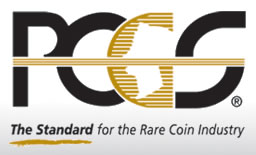 Effective August 1, 2010, Professional Coin Grading Service (PCGS) will begin offering "Plus" (+) designations for all qualified coins submitted in the Regular, Express and Walkthrough service levels.
Effective August 1, 2010, Professional Coin Grading Service (PCGS) will begin offering "Plus" (+) designations for all qualified coins submitted in the Regular, Express and Walkthrough service levels. 
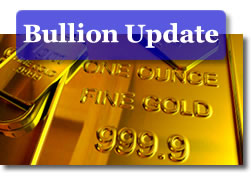
 For more than a century, numismatists have puzzled over the purpose of the Kellogg fifties and exactly how many were struck. All known specimens were minted in proof format, suggesting they may have served as presentation pieces for bankers and politicians: They were struck when the firm was considering a large business strike mintage to compete with the fifty dollar pieces of their competitors, Wass, Molitor and Company. The "regular-issue" coins never materialized, but the proof production has delighted and puzzled collectors since the coins appeared.
For more than a century, numismatists have puzzled over the purpose of the Kellogg fifties and exactly how many were struck. All known specimens were minted in proof format, suggesting they may have served as presentation pieces for bankers and politicians: They were struck when the firm was considering a large business strike mintage to compete with the fifty dollar pieces of their competitors, Wass, Molitor and Company. The "regular-issue" coins never materialized, but the proof production has delighted and puzzled collectors since the coins appeared. The United States Mint reported a second week of rising sales, as the 2010 Proof Set attracted buyers en masse and cheaper prices lifted gold coin products.
The United States Mint reported a second week of rising sales, as the 2010 Proof Set attracted buyers en masse and cheaper prices lifted gold coin products.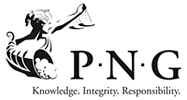
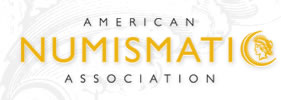 Numismatic Theatre, a popular part of the American Numismatic Association's convention education programs, has been finalized for the 2010 ANA World's Fair of Money, Aug. 10-14 in Boston.
Numismatic Theatre, a popular part of the American Numismatic Association's convention education programs, has been finalized for the 2010 ANA World's Fair of Money, Aug. 10-14 in Boston. Numismatic tradition states that the 1841 quarter eagle was struck only as a Proof. This has never made sense to me. With as many as 15-17 pieces known, why would the Mint have made so many Proofs in 1841 when virtually none were struck in any other year between 1842 and 1853? And why would most of the survivors be in such low grades (EF40 to AU50) when most of the Proof gold coins from the 1840's that still exist tend to be in reasonably high grades?
Numismatic tradition states that the 1841 quarter eagle was struck only as a Proof. This has never made sense to me. With as many as 15-17 pieces known, why would the Mint have made so many Proofs in 1841 when virtually none were struck in any other year between 1842 and 1853? And why would most of the survivors be in such low grades (EF40 to AU50) when most of the Proof gold coins from the 1840's that still exist tend to be in reasonably high grades?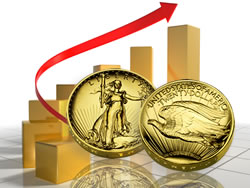 The United States Mint had a pretty good week, for a second time after several weeks of lazy sales. Most products outperformed prior gains, and the inaugural numbers for the 2010 United States Mint Proof Set were stronger than those of the 2010 Mint Set which were released a week earlier. For bullion coins, the one ounce versions enjoyed growth spurts. To the numbers...
The United States Mint had a pretty good week, for a second time after several weeks of lazy sales. Most products outperformed prior gains, and the inaugural numbers for the 2010 United States Mint Proof Set were stronger than those of the 2010 Mint Set which were released a week earlier. For bullion coins, the one ounce versions enjoyed growth spurts. To the numbers...

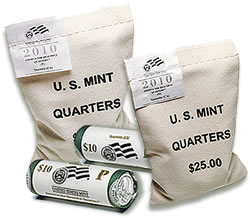


 There probably exist four Proof 1804 Eagles, and this one is
There probably exist four Proof 1804 Eagles, and this one is  Perhaps a deeper question relates to whether 1804 silver dollars or Proof 1804 Eagles are really needed for bust or entire sets of these respective denominations. I know that David Queller thought of his silver dollar set as being much more "complete" after he acquired an 1804 dollar. In my view, though, someone who collects bust silver dollars should not need an 1804 silver dollar for a complete set. The 1804 silver dollar is in a different category, not solely because all 1804 dollars were probably struck as Proofs. They were struck in later time periods for different purposes. I am not suggesting here that the purposes were more or less important, just different.
Perhaps a deeper question relates to whether 1804 silver dollars or Proof 1804 Eagles are really needed for bust or entire sets of these respective denominations. I know that David Queller thought of his silver dollar set as being much more "complete" after he acquired an 1804 dollar. In my view, though, someone who collects bust silver dollars should not need an 1804 silver dollar for a complete set. The 1804 silver dollar is in a different category, not solely because all 1804 dollars were probably struck as Proofs. They were struck in later time periods for different purposes. I am not suggesting here that the purposes were more or less important, just different. In 2007, I wrote about
In 2007, I wrote about  Patterns struck in copper of $50 gold piece are available to collectors; all are dated 1877. Fifty dollar denomination patterns of 1877 are termed 'Half Unions.' Only two struck in gold survive and both of these are in the Smithsonian. Quite a few copper and gold-plated copper patterns are owned by collectors. There are two in the upcoming B&M Boston auction.
Patterns struck in copper of $50 gold piece are available to collectors; all are dated 1877. Fifty dollar denomination patterns of 1877 are termed 'Half Unions.' Only two struck in gold survive and both of these are in the Smithsonian. Quite a few copper and gold-plated copper patterns are owned by collectors. There are two in the upcoming B&M Boston auction. I have seen several 1854-S Quarter Eagles and I am very much attracted to the issue. I have not yet, though, devoted an article to 1854-S Quarter Eagles. I will do so.
I have seen several 1854-S Quarter Eagles and I am very much attracted to the issue. I have not yet, though, devoted an article to 1854-S Quarter Eagles. I will do so.
